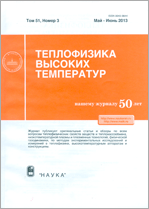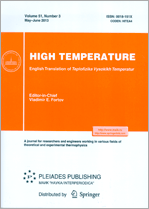|
This article is cited in 22 scientific papers (total in 22 papers)
Plasma Investigations
Optical investigations of the multicomponent plasma of the capillary discharge: Subsonic outflow regime
A. S. Pashchina, A. V. Efimov, V. F. Chinnov
Joint Institute for High Temperatures, Russian Academy of Sciences, Moscow
Abstract:
We present the results of spectroscopic investigations of the plasma of the pulsed discharge in the capillary with the ablation wall made of a carbon-containing polymer, at the pulse energy $50$–$150$ J, the current $50$–$120$ A, and the discharge pulse duration of $9$ ms. The system of video registration and fast spectral diagnostics makes it possible to investigate the spatiotemporal evolution of the plasma structure and parameters both inside the capillary volume $(1$–$2$ mm in diameter, $3$–$5$ mm in depth$)$ and in the subsonic plasma jet. On the basis of the 2D-matrix high resolution spectra containing the $\rm H_{\alpha}$ and the $\rm H_{\beta}$ lines, the $\rm CN$ and the Swan molecular bands, and the $\rm CuI$ lines, we obtain the spatiotemporal distributions of the electron density and the plasma temperature in the capillary and the subsonic plasma jet. We reveal the peculiarities of the spatial distribution of the electron density and of the spectral components intensity within both above zones conditioned, in particular, by achievement, in the hot central zone, of an electron temperature above the normal temperature (equal to $16500$ K for the $\rm H_{\beta}$). We analyze the thermodynamic state of the “hot” discharge core and show the possibility of its representation as a highly ionized atmospheric pressure hydrogen plasma.
Received: 05.08.2014
Accepted: 10.03.2015
Citation:
A. S. Pashchina, A. V. Efimov, V. F. Chinnov, “Optical investigations of the multicomponent plasma of the capillary discharge: Subsonic outflow regime”, TVT, 54:4 (2016), 513–528; High Temperature, 54:4 (2016), 488–502
Linking options:
https://www.mathnet.ru/eng/tvt4946 https://www.mathnet.ru/eng/tvt/v54/i4/p513
|


|





 Contact us:
Contact us: Terms of Use
Terms of Use
 Registration to the website
Registration to the website Logotypes
Logotypes








 Citation in format
Citation in format 
